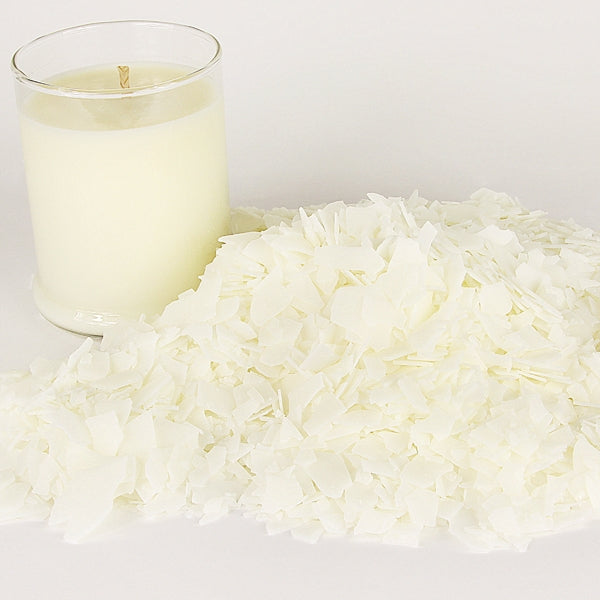Explore the Magic of Crystal Soy Candles and Home Fragrance
Explore the Magic of Crystal Soy Candles and Home Fragrance
Blog Article
From Wick to Wax: Recognizing the Chemistry Behind Soy Wax Candles and Their Ecological Influence
As we illuminate our rooms with the cozy glow of candle lights, there lies a world of intricate chemistry behind the apparently easy act of lighting a soy wax candle. The option between soy and paraffin wax expands beyond simple visual appeals, diving into the world of environmental effect and the very composition of the products. Understanding the molecular framework of soy wax and its burning procedure sheds light on the emissions released right into our surroundings. Join us as we untangle the scientific complexities behind soy wax candle lights and discover their implications on our atmosphere.
Soy Wax Vs. Paraffin Wax
When comparing soy wax and paraffin wax for candle production, it is important to comprehend the distinctive qualities and benefits of each material. Soy wax is a natural, renewable energy originated from soybean oil, making it eco-friendly and environment-friendly - soy wax candles. On the other hand, paraffin wax is a by-product of petroleum refining, which raises problems concerning its ecological influence and sustainability
Soy wax candle lights burn cleaner and give off much less residue contrasted to paraffin wax candles, making them a healthier option for indoor air high quality. Additionally, soy wax has a reduced melting factor, enabling for a longer-lasting candle light that spreads scent a lot more properly. Paraffin wax, on the various other hand, often tends to shed faster and much less cleanly, potentially launching unsafe chemicals into the air.
From a sustainability perspective, soy wax is favored for its biodegradability and eco-friendly sourcing, straightening with the expanding customer choice for eco aware products. While paraffin wax has been a typical choice in candle light making as a result of its cost and simplicity of usage, the shift in the direction of environmentally friendly alternatives like soy wax is acquiring momentum in the industry.
Chemical Structure of Soy Wax

Burning Refine in Soy Candles
The chemical make-up of soy wax directly influences the burning process in soy candles, affecting factors such as melt time, fragrance launch, and ecological effect. When a soy candle light is lit, the warm from the flame thaws the wax near the wick.
The burning efficiency of soy candles is affected by the pureness of the soy wax and the quality of the wick. Furthermore, soy wax candle lights have a reduced environmental effect contrasted to paraffin candle lights due to their sustainable and eco-friendly nature.

Environmental Advantages of Soy Wax

Considered a lasting option to traditional paraffin wax, soy wax uses noteworthy ecological benefits that make it a preferred choice amongst eco-conscious consumers. Soy wax burns cleaner and produces less residue than paraffin wax, adding to better indoor air top quality and minimizing the demand for cleaning and upkeep. In general, the ecological advantages of soy wax straighten with the growing need for environment-friendly and lasting products in the market.
Recycling and Disposal Factors To Consider
Reusing and appropriate disposal of soy wax candle lights play a critical role in maintaining ecological sustainability our website and reducing waste in homes and neighborhoods. When it comes to reusing soy wax candle lights, the first action is to make sure that the candle has actually burned completely.

In regards to disposal, if recycling is not a choice, soy wax candle lights are eco-friendly and can be securely dealt with in many household waste systems. However, it is constantly advised to talk to regional recycling centers or waste administration services for particular standards on candle light disposal to make sure proper handling and environmental security.
Final Thought
In verdict, the chemistry behind soy wax candles reveals their ecological benefits over paraffin wax candle lights. Soy wax, obtained from soybean oil, burns cleaner and generates much less soot when compared to paraffin wax.
When comparing soy wax and paraffin wax for candle light production, it is necessary to recognize the distinct qualities and advantages of each product (candles).Soy wax candles melt cleaner and send out less soot compared to paraffin wax candles, making them a much healthier choice for interior air top quality.Thought about a sustainable home option to standard paraffin wax, soy wax provides significant ecological advantages that make it a preferred selection among eco-conscious consumers. Soy wax burns cleaner and creates much less residue than paraffin wax, adding to far better indoor air quality and decreasing the requirement for cleansing and upkeep.In conclusion, the chemistry behind soy wax candles discloses their ecological benefits over paraffin wax candles
Report this page